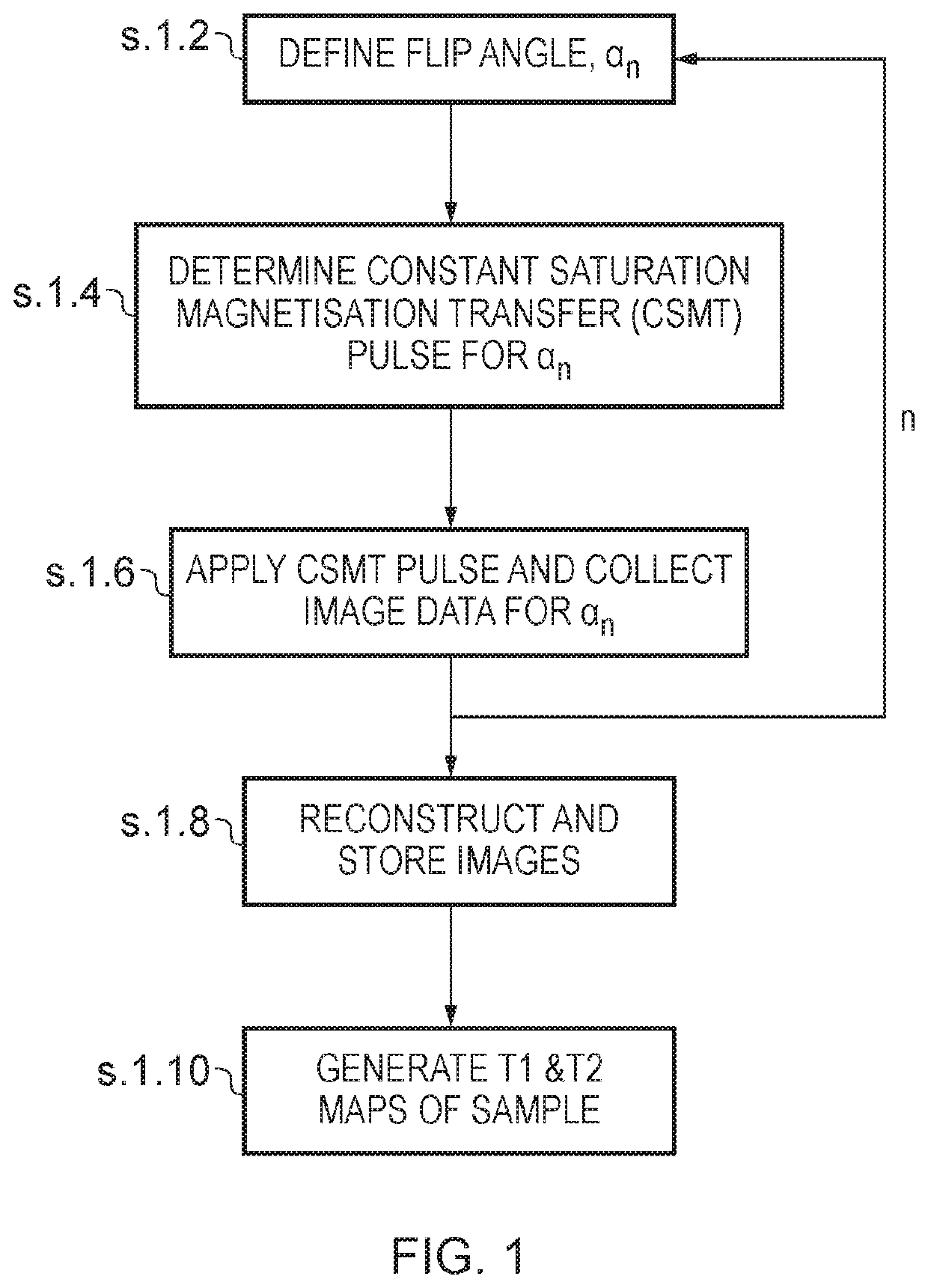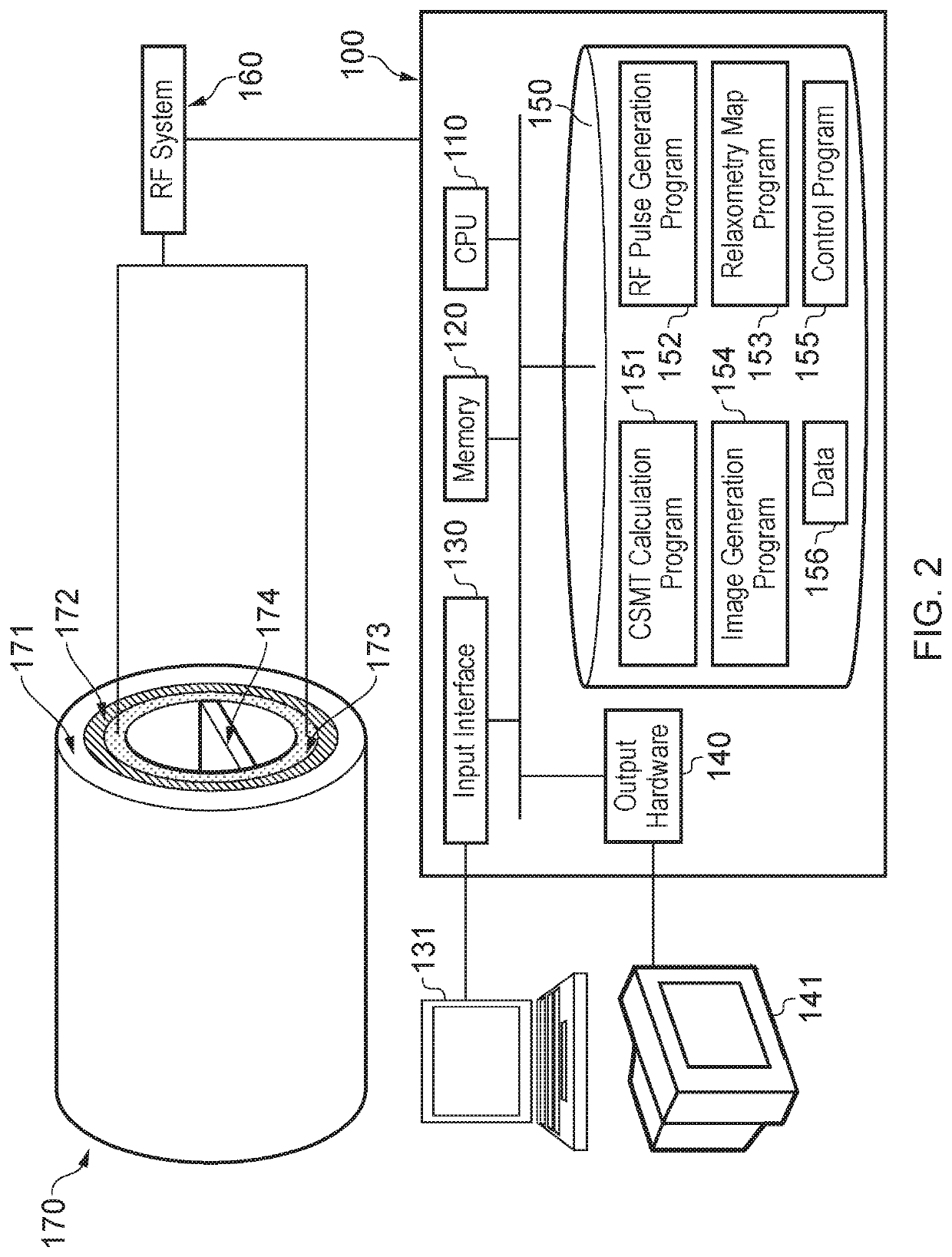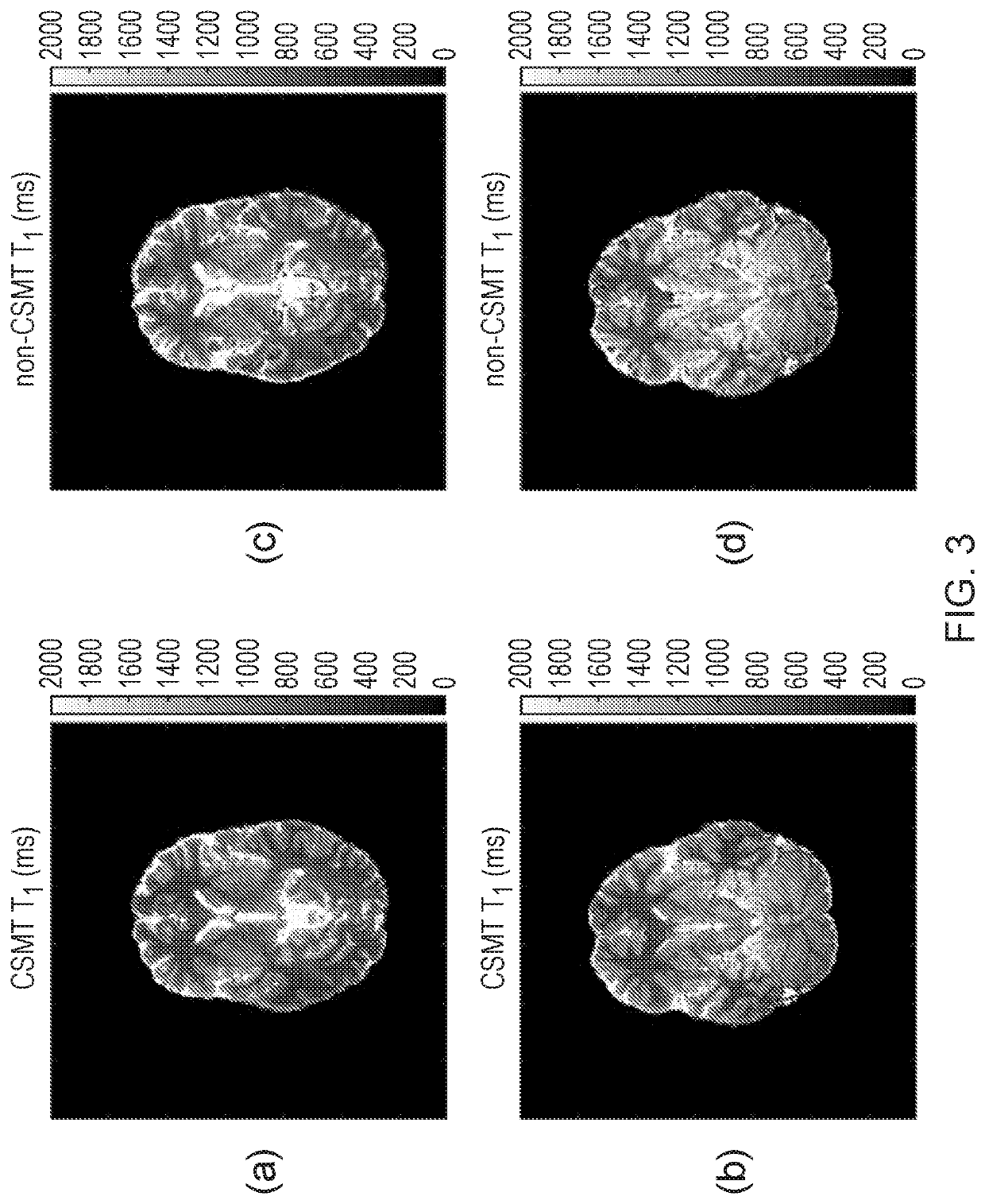Controlled Excitation and Saturation of Magnetisation Transfer Systems
a magnetisation transfer and excitation system technology, applied in the field of magnetic resonance imaging, can solve the problems of inability to clinically practicable, m0, t1 and t2 estimation errors, and undermine the utility of secure diagnostic methods, and achieve constant magnetisation transfer (mt), stable relaxation time measurements, and control over the effect of background pool induced saturation
- Summary
- Abstract
- Description
- Claims
- Application Information
AI Technical Summary
Benefits of technology
Problems solved by technology
Method used
Image
Examples
Embodiment Construction
[0070]A brief overview of embodiments of the invention will now be given.
[0071]In biological samples, where multiple pools of magnetization are always present, applied RF pulses induce not only rotation of the free pool of protons but also a simultaneous partial saturation of the background pool of restricted protons. The background pool of protons is characterized by its short T2 (shorter than the duration of the RF pulse) and as a consequence does not produce an observable signal, however, since the energy of the applied RF pulses is absorbed by the background pool, this ultimately affects the relaxometry measurements of the free pool, specifically, the T1 measurement. This phenomenon is known as Magnetisation Transfer (MT). If the effects of MT are not taken into account, this can lead to errors in the T1 and T2 measurements. To take the saturation of the background pool into consideration, multi-pool modelling is usually required which is considerably time consuming. The present...
PUM
 Login to View More
Login to View More Abstract
Description
Claims
Application Information
 Login to View More
Login to View More - R&D
- Intellectual Property
- Life Sciences
- Materials
- Tech Scout
- Unparalleled Data Quality
- Higher Quality Content
- 60% Fewer Hallucinations
Browse by: Latest US Patents, China's latest patents, Technical Efficacy Thesaurus, Application Domain, Technology Topic, Popular Technical Reports.
© 2025 PatSnap. All rights reserved.Legal|Privacy policy|Modern Slavery Act Transparency Statement|Sitemap|About US| Contact US: help@patsnap.com



